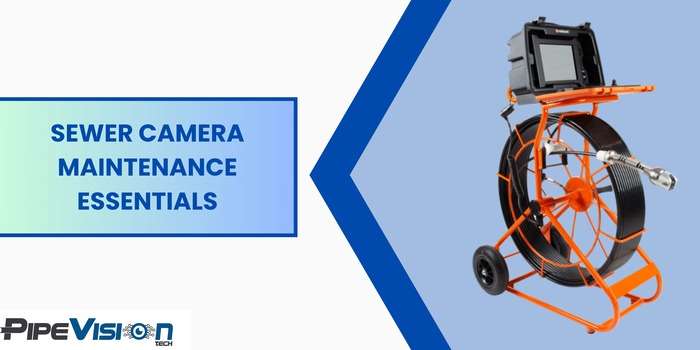Blogs, Sewer pipe camera
Sewer Camera Maintenance Essentials
Your sewer camera is more than a tool; it’s an investment in precise plumbing diagnostics. To safeguard this investment and ensure consistent, reliable performance, mastering the art of sewer camera maintenance is paramount. In this blog, we’ll cover essential tips, schedules, and best practices to unlock the full potential and longevity of your sewer camera.
Why Sewer Camera Maintenance Matters
Investing in Longevity
Regular maintenance isn’t just about fixing issues; it’s about preventing them. By adopting a proactive approach to maintenance, you invest in the longevity of your sewer camera.
Consistent and Reliable Performance
A well-maintained sewer camera ensures that every inspection is a seamless experience, delivering accurate and clear results without unexpected hiccups.
Essential Sewer Camera Maintenance Tips
Tip 1: Keep It Clean
Regularly clean the camera lens and housing to prevent the buildup of debris, ensuring optimal image quality during inspections.
Tip 2: Check Cables and Connectors
Inspect cables and connectors for signs of wear or damage. Replace any faulty components promptly to avoid disruptions during inspections.
Tip 3: Calibration Checks
Periodically calibrate your sewer camera to maintain accurate location data. Proper calibration is essential for precise inspections.
Tip 4: Battery Care
For battery-powered cameras, follow proper charging and discharging practices to prolong battery life. Replace old batteries as needed.
Tip 5: Protective Storage
Store your sewer camera in a protective case or bag when not in use to shield it from environmental elements that could cause damage.
Establishing a Sewer Camera Maintenance Schedule
Schedule 1: Daily Checks
Perform quick visual checks before each use, including cable inspections and a brief camera functionality test.
Schedule 2: Weekly Inspections
Dedicate time each week to a more thorough inspection, focusing on cleaning, cable integrity, and overall camera health.
Schedule 3: Monthly Calibration
Ensure monthly calibration checks to guarantee accurate location data during inspections.
Conclusion
Prolonging the lifespan of your sewer camera is not just about maintaining a piece of equipment; it’s about preserving a critical tool in your plumbing arsenal. By adopting these maintenance essentials, you safeguard the reliability and performance of your sewer camera for years to come.
PipeVisionTech: Where Longevity Meets Excellence
For cutting-edge sewer camera solutions and maintenance essentials, trust PipeVisionTech. With a commitment to excellence, PipeVisionTech provides top-notch products that stand the test of time.
Frequently Asked Questions
Q1: How often should I clean the camera lens?
Clean the lens before and after each use, and more frequently if you encounter particularly dirty environments.
Q2: Can I use common cleaning products for the camera lens?
Stick to mild, camera-friendly cleaning solutions to avoid damaging the lens coating. Consult your camera’s manual for specific recommendations.
Q3: What signs indicate the need for cable replacement?
Signs of fraying, exposed wires, or inconsistent connectivity during inspections may indicate the need for cable replacement.
Q4: Is calibration necessary for all sewer cameras?
Calibration is essential for sewer cameras with location-tracking capabilities. Check your camera’s user manual for calibration guidelines.
Q5: How should I store the sewer camera for long periods?
Store the camera in a cool, dry place in a protective case or bag to prevent dust and moisture buildup. Remove the battery if applicable.


